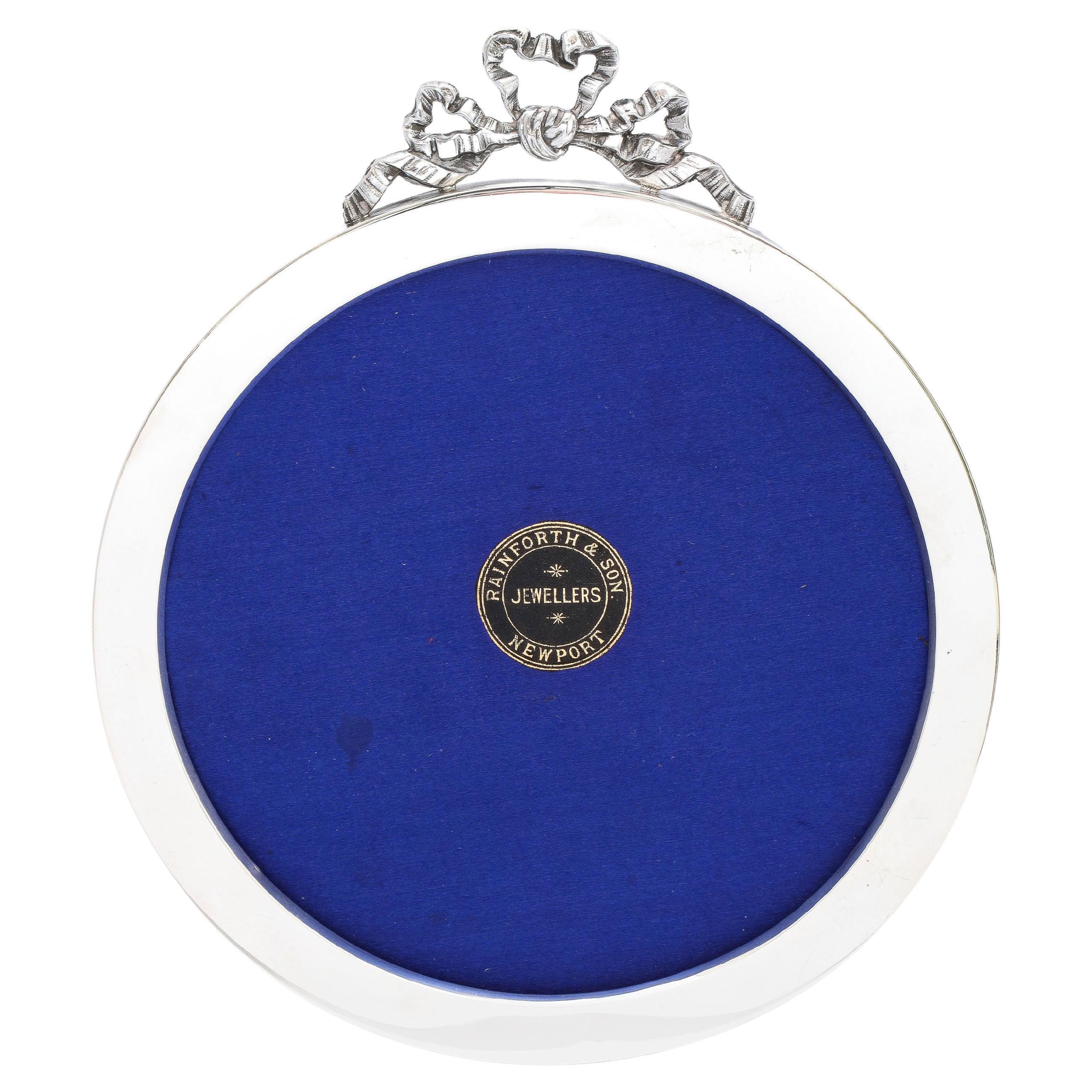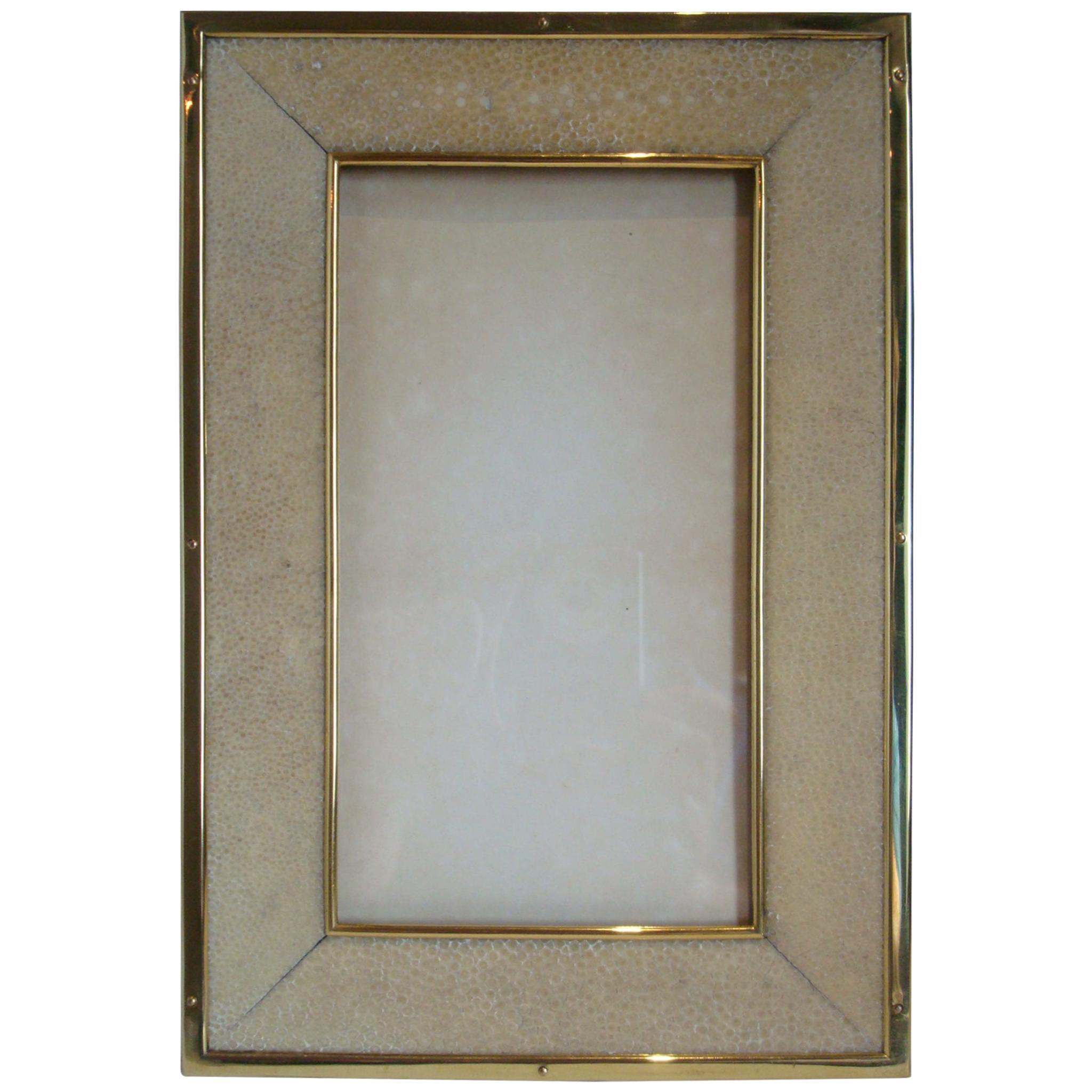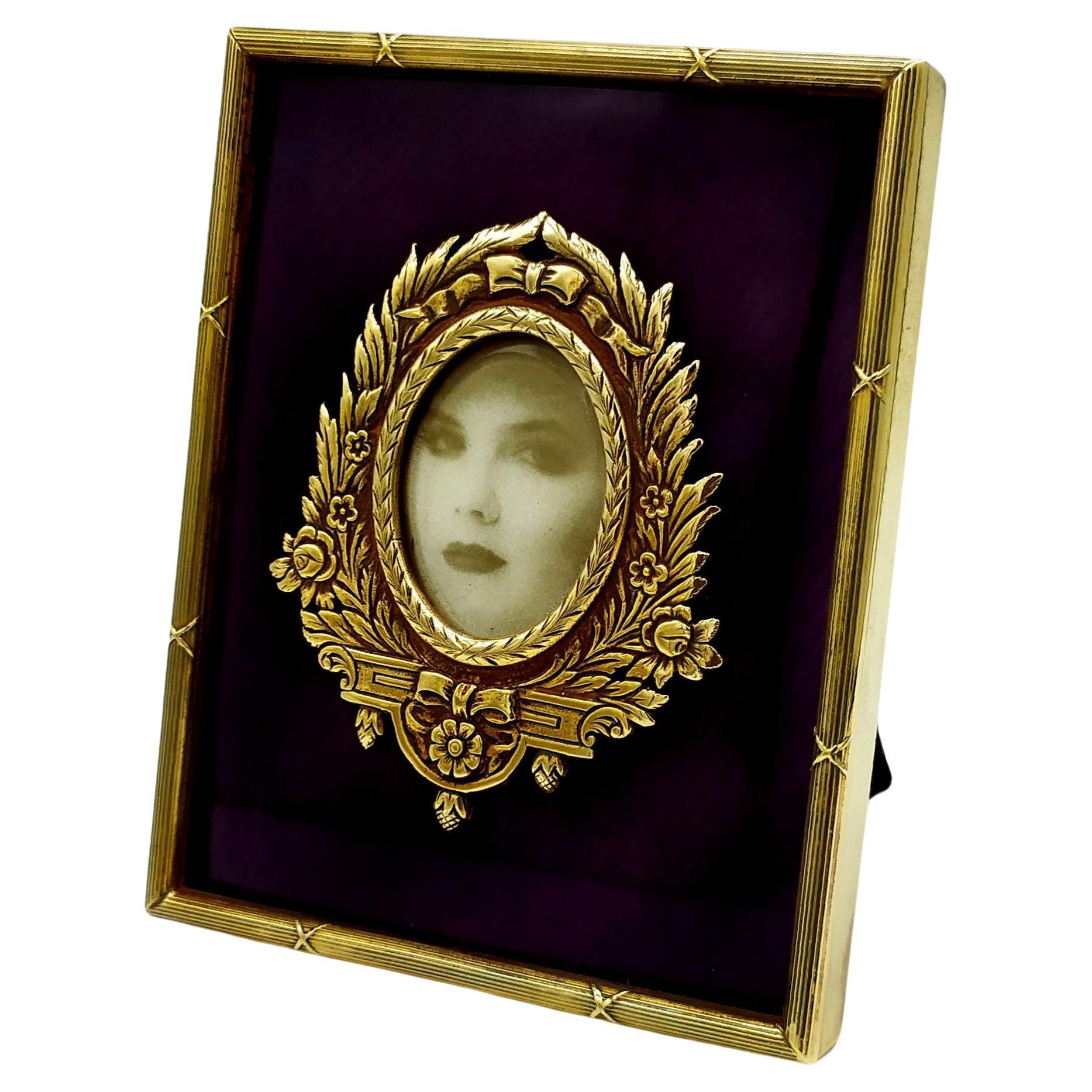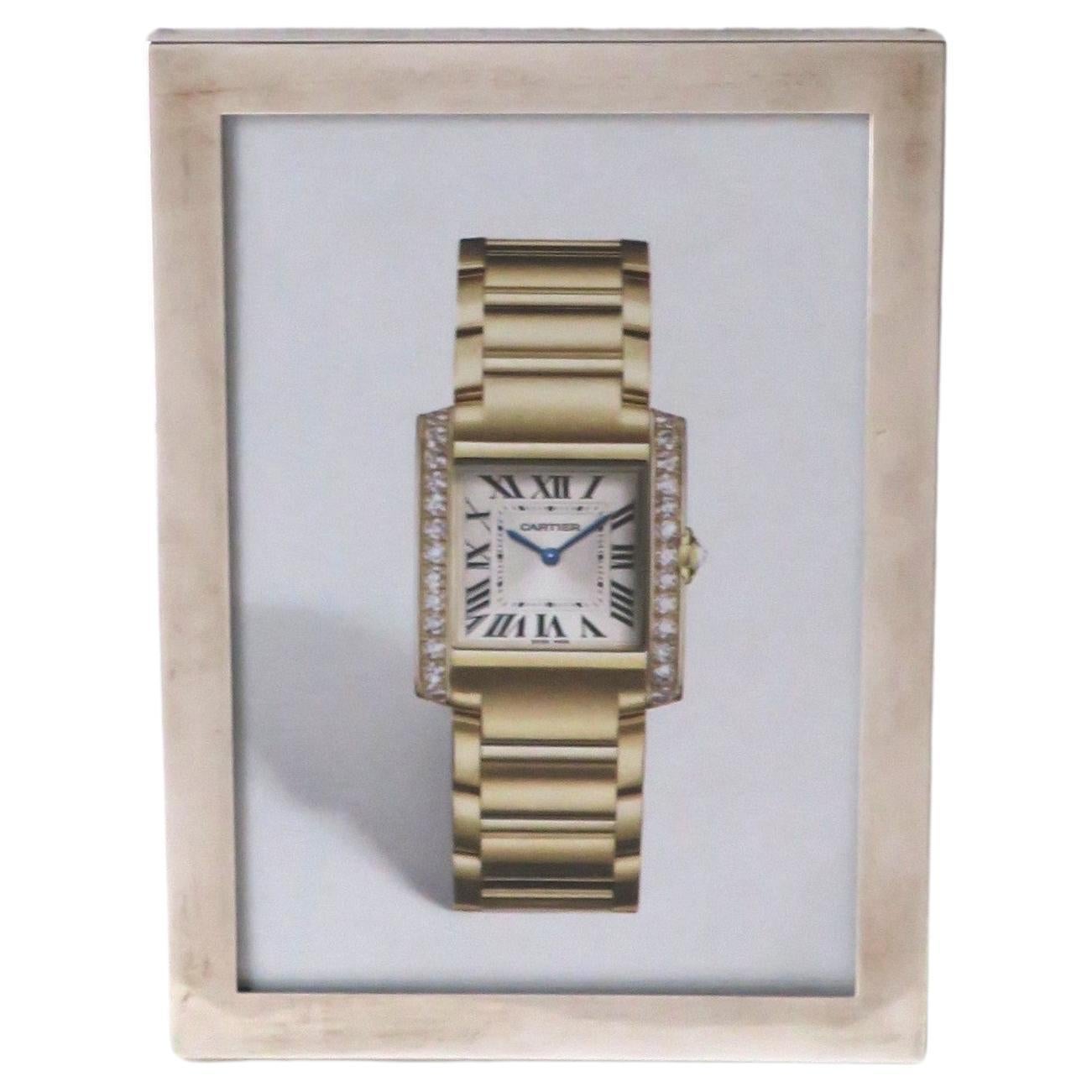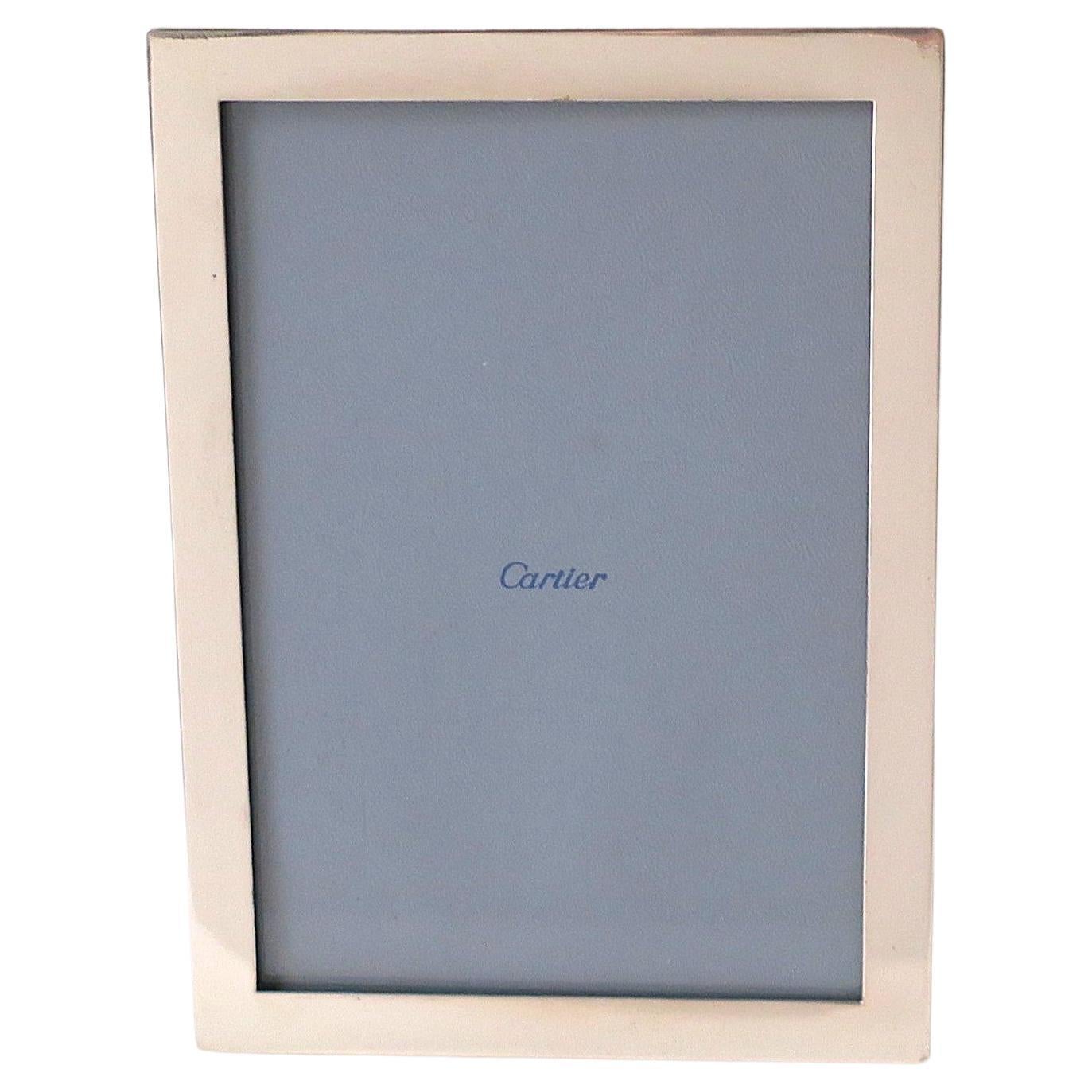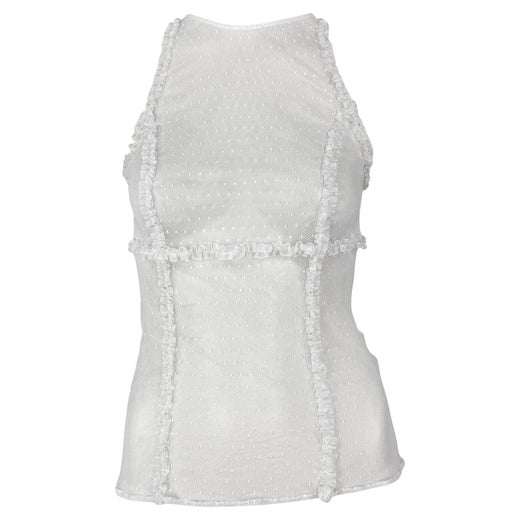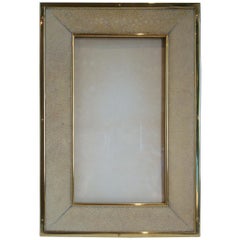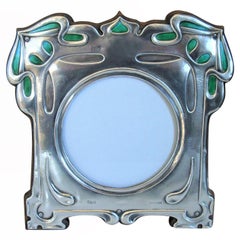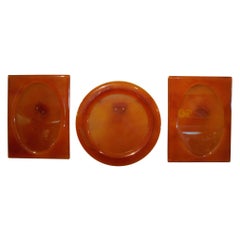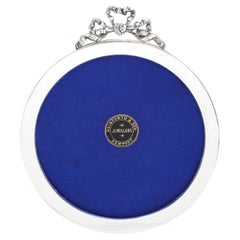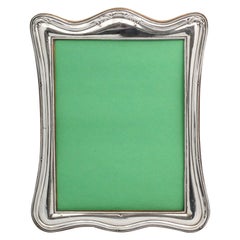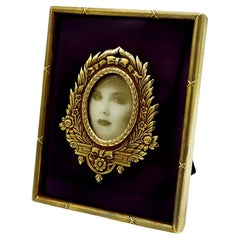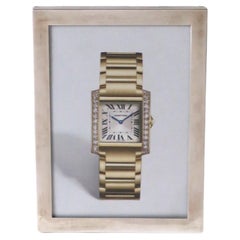Gianni Versace Sterling Silver Round Photograph / Photo / Picture Frame 1990´s
Acerca del artículo
- Creador:Gianni Versace (Artista)
- Dimensiones:Altura: 2,6 cm (1,03 in)Diámetro: 25,3 cm (9,97 in)
- Estilo:Renacimiento griego (En el estilo de)
- Materiales y técnicas:
- Lugar de origen:
- Época:1990-1999
- Fecha de fabricación:1990´s
- Estado:Desgaste acorde con la edad y el uso. it has some old glue of a sticker on the back, under the foot.
- Ubicación del vendedor:Buenos Aires, AR
- Número de referencia:1stDibs: LU2027345189022
Gianni Versace
La extravagancia característica del legendario diseñador de moda Gianni Versace -siempre asociada al glamour, el sexo, los famosos y el espectáculo- puede eclipsar el amplio y profundo compromiso del modisto italiano con la historia y la cultura. Hoy, sus vestidos y trajes vintage , bolsos , gafas de sol y otros accesorios tienen un aspecto asombrosamente fresco y actual.
Más que ningún otro diseñador antes que él, Versace buscó inspiración en los famosos, la música y el arte pop , y sus diseños subversivos, maximalistas y descaradamente seductores infundieron a la alta costura una ética totalmente nueva. "No creo en el buen gusto", explicó en una ocasión. En lugar de eso, se divertía con la moda, como lo hacía con la vida.
Gianni Versace nació en Calabria, Italia. Su madre era una modista de éxito que empleaba a más de 40 costureras. De niño, el pequeño Gianni se maravillaba en su taller, que se convertiría en una especie de universidad, donde aprendió las excepcionales técnicas de construcción que estaban en la base de su expresión creativa.
En 1972, a los 25 años, se trasladó a Milán para trabajar en la moda. Lanzó su primera colección -y su marca- en 1978, con su hermano mayor Santo al frente del negocio. Pronto, la hermana Donatella, a quien Gianni vestía y llevaba a discotecas cuando aún era una niña, se unió a la empresa familiar, donde desempeñó un papel creativo y dirigió líneas de prêt-à-porter enormemente populares como Versus.
Vintage Versace - y Gianni Versace Couture, que debutó en 1989 - se ha convertido en un manjar para los entusiastas de la moda moderna que buscan los códigos de la casa, ahora icónicos, que se originaron en los diseños de las décadas de 1980 y 1990. Sus prendas glamurosas y seductoras -las faldas ceñidas y los esbeltos vestidos de fiesta de tirantes , así como los anuncios eróticos de las revistas que los publicitaban- ocupan un lugar destacado, pero las influencias artísticas e históricas de Versace también fueron amplias.
Versace era coleccionista de arte, y durante la década de 1980 aceptó encargos para crear trajes para representaciones teatrales y habló de buscar inspiración en numerosas culturas. El New York Times señalaba en 1997 que la industria de la moda "está ahora impulsada por la cultura contemporánea porque el Sr. Versace la hizo así".
Los expertos consideran que su desfile de otoño/invierno de 1991/1992 -en el que participaron las supermodelos Christy Turlington, Cindy Crawford, Naomi Campbell y Linda Evangelista cantando en sincronía la canción "Freedom" de George Michael- fue el momento en que los dos mundos de la moda y la cultura pop se unieron, cambiando ambos para siempre.
El espíritu aventurero de Versace en el diseño le llevó a crear estampados de tonos joya basados en motivos griegos, símbolos etruscos, el barroco italiano y Andy Warholʼs Marilyn Monroe. Había vestidos ceñidos en Oroton, su textil patentado de cota de malla que caía como el satén, y conjuntos de bondage de cuero. Sexo vendido, tanto para mujeres como para hombres. El difunto comisario Richard Martin escribió: "[Versace] se convirtió en el abanderado de la moda masculina gay porque evitó el decoro y diseñó para el deseo".
Tras el trágico asesinato de Versace en 1997, Donatella asumió el papel de directora artística y siguió haciendo evolucionar los códigos de la casa con un toque de su perspectiva femenina y feminista. Hoy, Santo Versace es el director ejecutivo de Versace y Donatella es su directora creativa.
Echa un vistazo a una extraordinaria colección de vestidos de noche Gianni Versace vintage, bolsos, vestidos de día y mucho más en 1stDibs.
- EnvíoRecuperando presupuesto…Envío desde: Buenos Aires, Argentina
- Política de devolución
Más de este vendedor
Ver todoprincipios del siglo XX, Francés, Art Decó, Marcos de fotos
Cuero
mediados del siglo XX, Argentino, Colonial español, Plata esterlina
Silver, Plata esterlina
principios del siglo XX, Británico, Artes y manualidades, Plata esterlina
Plata esterlina, Esmalte
mediados del siglo XX, Francés, Art Decó, Marcos de fotos
Baquelita
mediados del siglo XX, Español, Moderno de mediados de siglo, Esculturas...
Silver
principios del siglo XX, Británico, Art Decó, Accesorios para tabaco
Plata esterlina
También te puede gustar
Antiguo, Principios del 1900, Inglés, Eduardiano, Marcos de fotos
Plata esterlina
Vintage, Década de 1920, Inglés, Eduardiano, Plata esterlina
Plata esterlina
Vintage, Década de 1970, Italiano, Luis XVI, Plata esterlina
Oro, Esmalte, Plata esterlina, Chapado en oro
mediados del siglo XX, Francés, Moderno, Marcos de fotos
Plata esterlina
mediados del siglo XX, Francés, Moderno, Marcos de fotos
Plata esterlina
mediados del siglo XX, Francés, Moderno, Marcos de fotos
Plata esterlina
